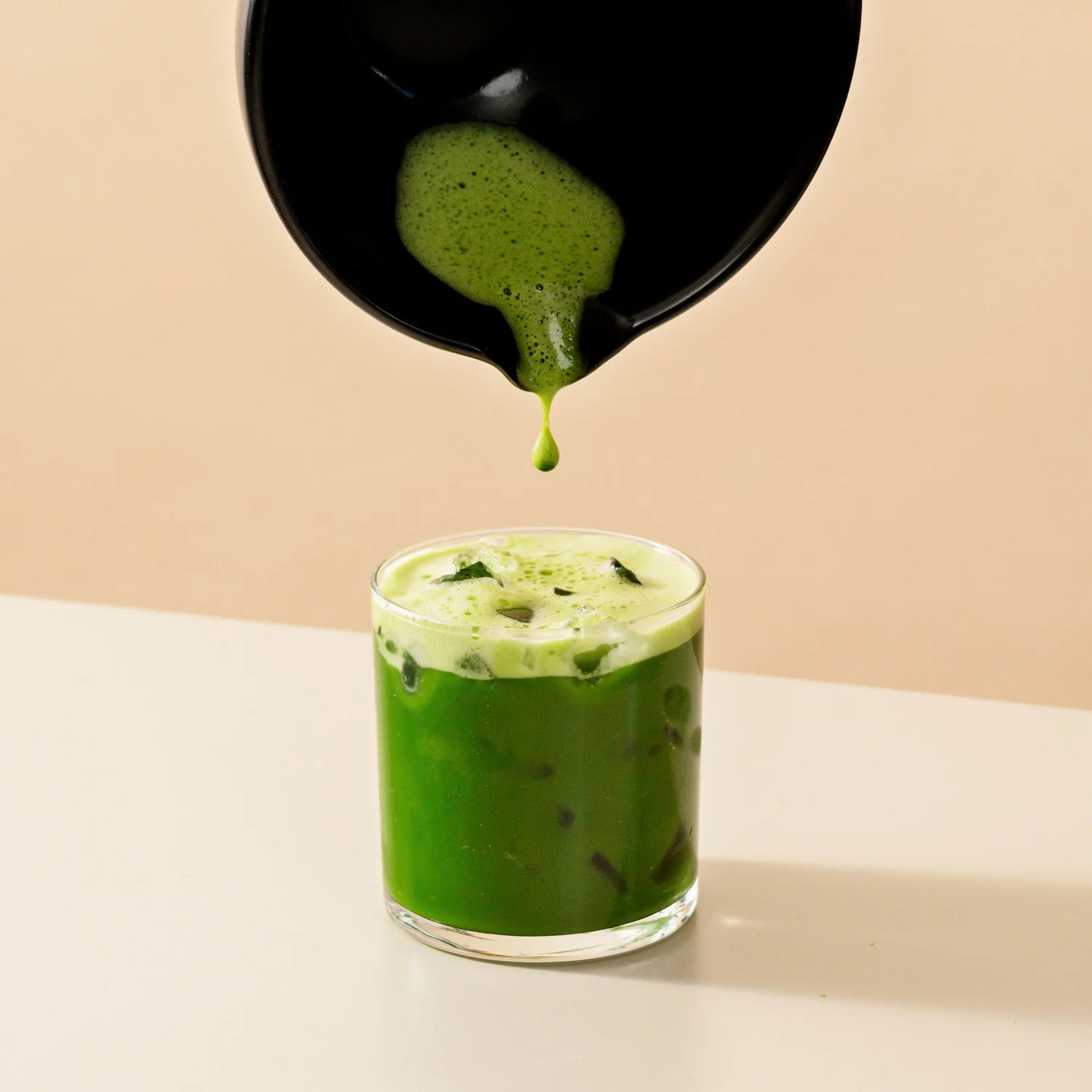Cultures worldwide have incorporated delicious, functional spices in tradition for over 6,000 years, so why wouldn’t we modern-day home cooks follow suit? Thanks to the chemical compounds within, many well-known spices not only up your flavor game but also aid in wellness efforts like fighting inflammation, settling your tummy, and even increasing libido. And you won’t have to do a scavenger hunt to find the spices we suggest — you might even be using them already!
One word of advice when implementing new spices in your routine: Just like with any food-based supplement, don’t expect a quick fix! The quantity of spice needed for benefits can vary and is sometimes higher than recommended for good flavor in one meal. Instead, focus on using a variety of quality spices in meals and even drinks throughout the day for overall wellness benefits and, of course, good taste. Bonus points if you choose organic and fair trade-certified spice options.
Without further ado, check out our picks for five easy-to-find, no-fuss, functional, and tasty spices to sprinkle into your meal plan this week. 🧑🍳
Cinnamon
BEST ALL-AROUND SPICE
One of the most beloved and versatile spices on our list, the use of cinnamon dates back to Ancient Egypt, where it was revered as a gift for kings and gods. Cinnamomum verum, Latin for “true cinnamon,” is native to India, Sri Lanka, and Bangladesh and is also called Ceylon cinnamon. Another type, Cinnamomum cassia, is native to China. While Ceylon offers a more concentrated source of cinnamon’s functional oil, they both offer benefits. (Note that Cassia contains coumarin, which, although rare, may be harmful in consistent, large amounts.)
“The use of cinnamon dates back to Ancient Egypt, where it was revered as a gift for kings and gods.”
Although revered mostly as a flavoring ingredient, cinnamon packs a punch when it comes to health benefits. Cinnamon gets its distinct sweet and spicy smell from the oils in the tree’s bark and is high in the compound cinnamaldehyde. Cinnamaldehyde is rich in antioxidants that benefit the human body on many levels. One study found that cinnamon may assist in reducing inflammation and oxidative stress levels.
Cinnamon is also said to reduce triglyceride levels and, therefore, lower overall cholesterol numbers. It can also reduce blood sugar by blocking the amount of sugar that enters the bloodstream — slowing the breakdown of carbohydrates. Other suggested health benefits of cinnamon include inhibiting cancer growth, slowing the progression of Alzheimer’s, and fighting fungal, bacterial, and even viral infections.
The amount suggested for health benefits is ½–2 teaspoons per day. One of our favorite ways to incorporate cinnamon is by making a yummy breakfast of apple cinnamon overnight oats.
Saffron
BEST DATE-NIGHT SPICE
Saffron’s origin is a bit of a mystery because historical records disagree on whether its roots lie in Asia, Iran, or Greece. Today, however, saffron is mostly sourced from Iran, with a small amount being produced in Greece and Morroco. Saffron threads come from the stigma of a saffron crocus flower, and the spice is considered the most expensive spice in the world by weight thanks to labor-intense harvesting needs.
Saffron’s most revered quality is its aphrodisiac ability to improve libido and sexual function in women and men. It’s also said to have strong brain health powers and antioxidants and reduce premenstrual syndrome. Some also believe it can enhance weight loss efforts by controlling appetite. Saffron’s effect on inhibiting cancer cell growth and slowing macular degeneration progression is still being studied.
“This spice is best utilized by soaking the tiny reddish-orange threads in hot — not boiling — water.”
The amount suggested for health benefits is 30 mg daily for PMS, erectile dysfunction, increased sexual desire, and more. This spice is best utilized by soaking the tiny reddish-orange threads in hot — not boiling — water. The resulting yellow-orange solution can be added to savory dishes for a distinct flavor, color, and, of course, health-boosting benefits. We suggest incorporating this saffron rice as a weekly side dish.
Cardamom
THE HAPPY BELLY SPICE
Although cardamom is mainly sourced from Guatemala today, ancient Greeks were big fans of this spice due to its versatile healing properties. Today, you’ll find cardamom as a common ingredient in Indian cooking and used in Nordic baked goods and Middle Eastern and Asian recipes. There are two types of cardamom — green or black. Green is considered superior in flavor, but it is less common and more expensive. That said, very little green cardamom is needed for flavor and benefits, so it may be worth the added cost. If you’ve never used cardamom before, you should expect to find it in the form of a pod, as its natural encasing protects and preserves the flavor of the seeds inside.
“Cardamom is a great digestive aid and is said to relieve bloating, gas, and indigestion.”
Cardamom is a great digestive aid and is said to relieve bloating, gas, and indigestion. In addition to digestive health, these little spice pods have been said to help control high blood pressure, heal ulcers, and prevent bad breath and cavities.
The amount suggested for health benefits is 3 grams daily. Although many bakers find cardamom to be best used in desserts, its unique but hard-to-pinpoint flavor makes it ideal for savory dishes too. Check out this one-pot chicken and rice recipe, which incorporates two other super spices as well.
Tumeric
KICKS INFLAMMATION TO THE CURB
A relative of ginger, turmeric has a bitter, astringent flavor but also shares ginger’s rockstar knack for healing. Derived from a root, this bright orange-yellow spice has been used in Ayurvedic and other forms of traditional medicine in China and India for hundreds of years. Its vibrant color is what makes curry, well, look like curry. (Be careful if you’re not used to cooking with turmeric. This powder will stain!) Tumeric contains the active ingredient curcumin, giving it beneficial, anti-inflammatory qualities.
“Although turmeric is common in capsule form as a supplement, it’s said to offer more bioavailability when used regularly in cooking.”
This spice benefits everyone but is especially good for those fighting chronic inflammatory conditions, including arthritis and other joint disorders, colitis, allergies, and infections. Other possible benefits include easing muscle soreness after exercise and reducing anxiety and cholesterol.
Although turmeric is common in capsule form as a supplement, it’s said to offer more bioavailability when used regularly in cooking, especially when combined with black pepper. There are some words of caution with this one. Not only can too much of it make your food taste bitter — it can also have adverse effects on kidneys for those with a prevalence of kidney stones. That said, turmeric is usually found in safe amounts when incorporated into cooking and, for most, its benefits outweigh the potential risks.
The amount suggested for health benefits is ¼–½ teaspoon in a 4–6 serving recipe or small amounts sprinkled on food or in tea several times a day. This turmeric fried eggs and kale salad would be good for breakfast, lunch, or dinner.
Cayenne
THE HOTTEST NUTRIENT POWERHOUSE ON THE BLOCK
Capsicum annuum is a spice derived from dried fresh cayenne pepper named after the Cayenne region of French Guiana. It will surely be recognizable to most as it is now an ingredient in various cuisines around the world. Cayenne is a member of the nightshade family, making it a cousin of tomatoes, potatoes, and eggplant. This popular dried red pepper, ground into flakes or a fine powder, will add some heat that, if you can tolerate, is certainly worth incorporating into weekly meals.
Dried cayenne powder is packed with vitamins C, E, and B, but is especially high in vitamin A — which is good for vision, reproduction, immune health, and more. In addition, cayenne is thought to boost metabolism and relieve headaches and congestion.
“Start with small amounts and build up based on tolerance.”
The best way to begin incorporating it is to start with small amounts and build up based on tolerance. Start with ¼–½ teaspoon and then work your way up to just shy of 1 teaspoon per day. Remember that too much of this is not a good thing and can ruin a dish. This vegetarian chili incorporates just enough cayenne for beginners! 🌶️
Although we are always on the hunt for ways to increase wellness in the most natural ways possible — which is often through food — it can be a good idea to consult a dietitian or doctor before making substantial changes to your routine. Quality ground spices used in small amounts in cooking rarely cause adverse health effects, but we recommend readers consult with a medical or nutritional expert for any concerns.
With that said, happy cooking!
Randi Donahue is a freelance writer who lives on the Gulf Coast of Florida and is fortunate to live right next to a glorious nature preserve and a few miles from a white sandy beach. She and her family are passionate about nature, health & wellness, and sustainable living and believe the path to a healthy and prosperous life requires authenticity, kindness and a whole lot of fresh air.
















